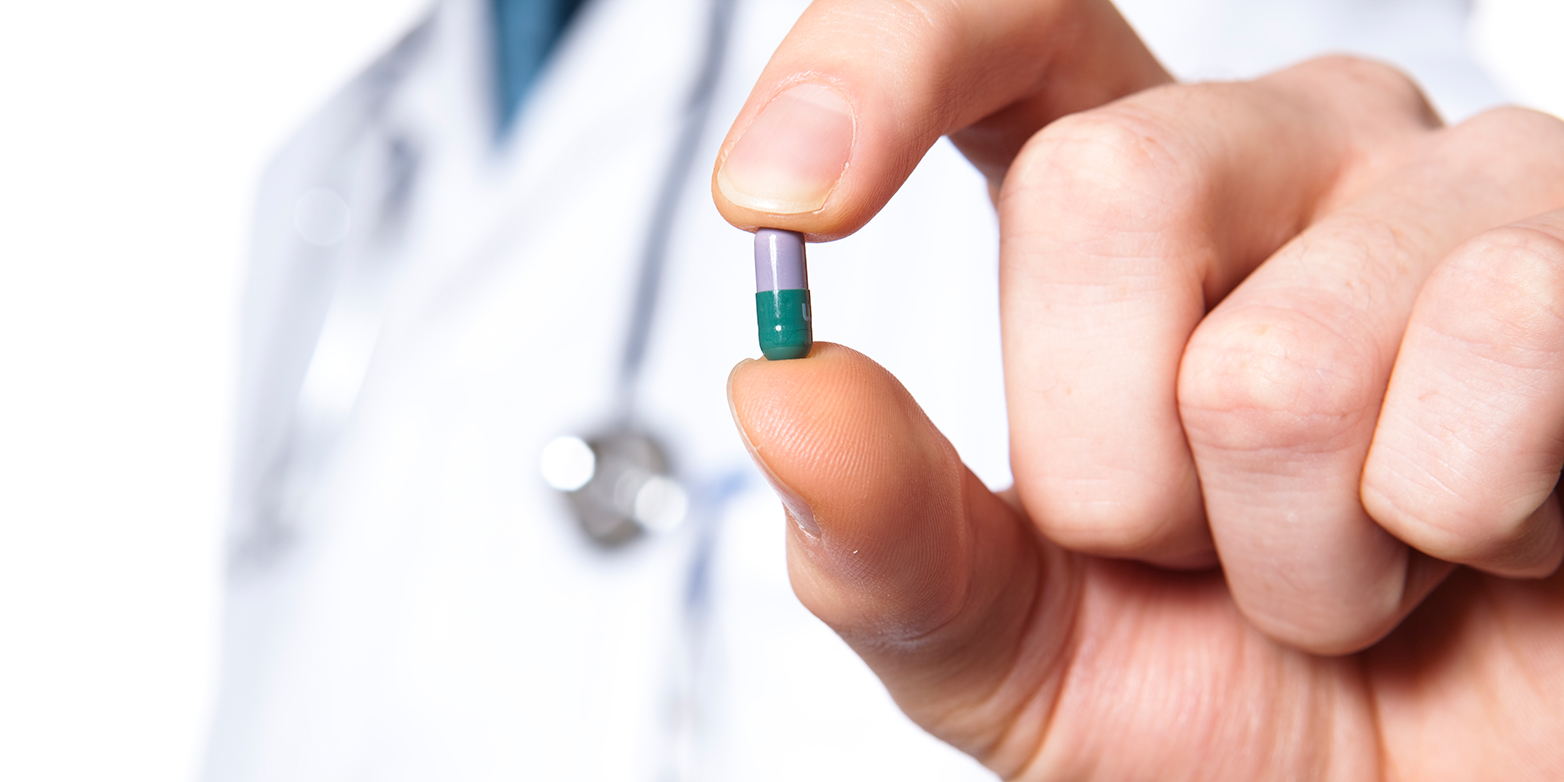Electronic pills of the future
Martin Fussenegger is convinced that the digital world in which we live will become interlinked with the biological world. He envisages that we will be able to cure diseases with electronic pills in the next 50 years.

For centuries, medicine has been taking the same approach to treatments: when we feel ill, we go to the doctor, who then prescribes us a pill that we are required to take three times a day. The doctor determines the drug dosage based on our body weight. There are several disadvantages to this approach: we go to the doctor only when we are already ill. The drug dosage is imprecise. And while we administer many treatments in an attempt to control symptoms, we often do nothing at all to cure the actual disease.
Bio-electronic implants
I would therefore argue that in the distant future we will no longer swallow the usual kind of pills, which have limited effectiveness and which we probably cannot use to solve all health problems. Instead, in 50 years’ time we will have electronic pills. They will take the form of capsules that we implant under the skin. First, the capsule will contain designer cells that monitor our metabolism and can intervene to correct problems through the production of proteins and metabolites. Second, the capsule will also contain electronic components that control the designer cells and are connected to the external world. Doctors will be able to use their smartphones to adjust the functioning of the electronic pills and intervene if necessary.

These electronic pills will bind diagnostics and treatment together. Treatment will be started immediately and administered in the correct individual dose, making it possible to nip metabolic diseases in the bud.
Molecular prostheses control metabolism
We have already seen the first research success in this direction. For years, our group has been researching and developing molecular prostheses. Prostheses are used for mechanical problems: if we can no longer walk, or if we lose a tooth or our hair falls out, we resort to prostheses to replace whatever is missing. Prostheses can be developed for malfunctioning biochemical processes as well; for instance, reprogrammed cells can take over the function of damaged cells in the body.
These designer cells may one day produce enough insulin for diabetics, regulate lipid metabolism to prevent obesity, or they may inhibit the growth of early-stage tumour cells. The cells would be able to detect disease and immediately start treatment by producing certain metabolites. When the treatment is complete, the cells would revert to standby mode.
A comparatively simple cellular therapy is already available: Novartis received approval in the US in August for a new leukaemia treatment that uses genetically modified patient-specific cells. These cells detect tumour cells in the blood and then destroy them. Novartis’ genetically engineered cells do not yet have the complexity of the molecular prosthesis we envisage, or any feedback control mechanism. Nevertheless, to genetically reprogram a cell and achieve a therapeutic function is a major milestone.
Biology and electronics communicate
The development is moving even faster in the field of electronics; our bodies are already linked to the digital world. We wear motion sensors that monitor our sleep, count our steps and calculate our calorie consumption. There are also research projects in which blood glucose and other health parameters can be determined in tear fluid and body sweat. And there are electronically controlled insulin pumps for diabetics and pacemakers that can be adjusted from outside the body.
Over the next few decades, it will be possible to combine these developments on the molecular level, and the biological world will communicate with the electronic world in both directions.
Developing an interface
This will require an interface that enables information to be exchanged between these two worlds. Such an interface might, for instance, be built using optogenetics, which is the science of using light to control genes and thus influence cell behaviour. Three years ago, for example, we conducted a feasibility study in which we demonstrated how we can use our minds to wirelessly control the production of a certain protein in mice. We did this by recording human brain activity with an electroencephalogram (EEG) and transmitted the thought input electronically to an optogenetic implant in mice.1
A former doctoral student from my group, who is now working in Shanghai, has now taken it one step further and succeeded in connecting optogenetics with smartphone electronics.2 Thus, it is possible to use a smartphone anywhere in the world to connect with an implant in a mouse in Shanghai, control the gene activity in this mouse and thus lower blood sugar levels.
A broadly effective electronic pill is still just a vision. However, through our research and collaboration with other scientists, we are committed to working steadily towards this goal.
References
1 Controlling genes with your thoughts (ETH News 11.11.2014)
2 Jiawei Shao et al.: Smartphone-controlled optogenetically engineered cells enable semiautomatic glucose homeostasis in diabetic mice. Science Translational Medicine 2017. 9: eaal2298, doi: external page10.1126/scitranslmed.aal2298call_made
